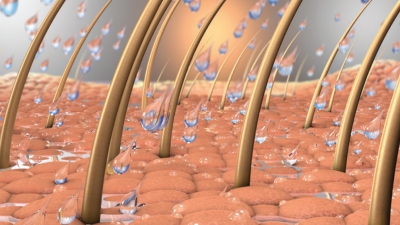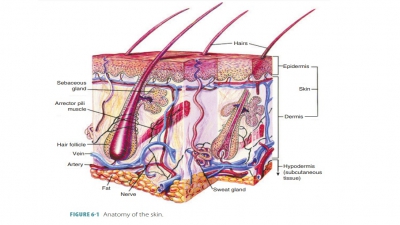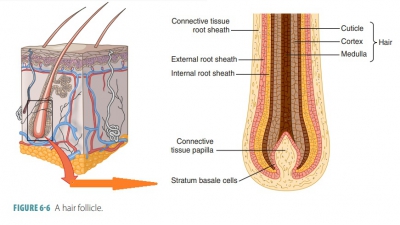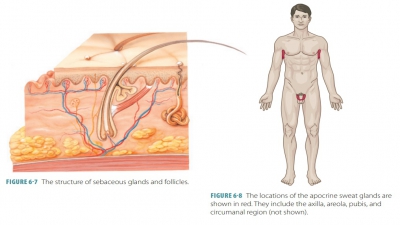Nails
| Home | | Anatomy and Physiology | | Anatomy and Physiology Health Education (APHE) |Chapter: Anatomy and Physiology for Health Professionals: Support and Movement: Integumentary System
Nails protect the ends of the fingers and toes, con-sisting of a nail plate above a skin surface called the nail bed.
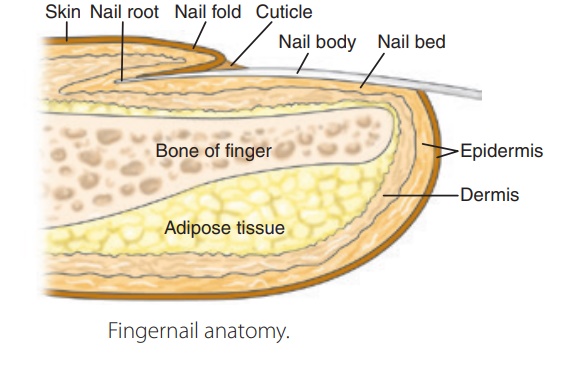
Nails
Nails protect the ends of the fingers and toes, consisting of a nail plate above a skin surface called the nail bed. A nail is a modification of the epidermis that contains hard keratin. The part of the nail plate (nail body) that grows most actively is covered by a whitish, half-moon–shaped lunula or lunule, where epithelial cells divide and become keratinized. The nail cells push forward over the nail bed, causing the nail body to continually grow outward. The nail bed is surrounded on each side by depressions known as the lateral nail grooves. The thickened proximal part of the nail bed is called the nail matrix, which is the part that causes nail growth. The nail of the middle finger grows the fastest, whereas the nail of the thumb grows the slowest (FIGURE 6-5).
The free edge of each nail is the
part that is trimmed when it extends to a sufficient length, with the thicker
region underneath where dirt accumu-lates called the hyponychium or the
“quick.” The hyponychium secures the nail plate’s free edge at the fingertip.
Skin folds called nail folds overlap the proximal and lateral borders of each nail. The proxi-mal
nail fold attaches to the nail body as the cuticle (eponychium).
Nails begin growing at the nail
root, which lies very close to the bone of the fingertip. A part of the stratum
corneum forms the cuticle, with underlying blood vessels that give the nail a
pinkish color. The nail body consists of dead, compressed cells packed with
keratin. Changes in the nails can help to diag-nose many different body
conditions. Nails normally appear pink in color because of underlying
capil-laries, with the white crescent-shaped lunula above the nail matrix. Discoloration of a nail may indicate
respiratory, thyroid, or immune disorders. A yellow tinge may indicate a
respiratory or thyroid gland condition. Pitting or distortion of the shapes of
the nails may indicate psoriasis and a concave shape may indicate a blood
disorder. Thickened yellow nails may indicate a fungal infection. If the nail
is outwardly concaved ( spoon nail),
an iron deficiency may exist. Horizontal Beau’s
lines across the nails may signify malnutrition.
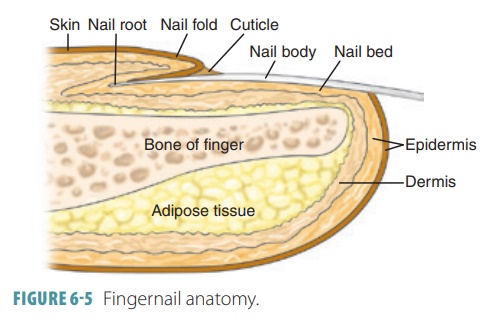
1. Describe
the substance that makes nails “hard.”
2. Define
the nail folds, cuticle, and lunula.

